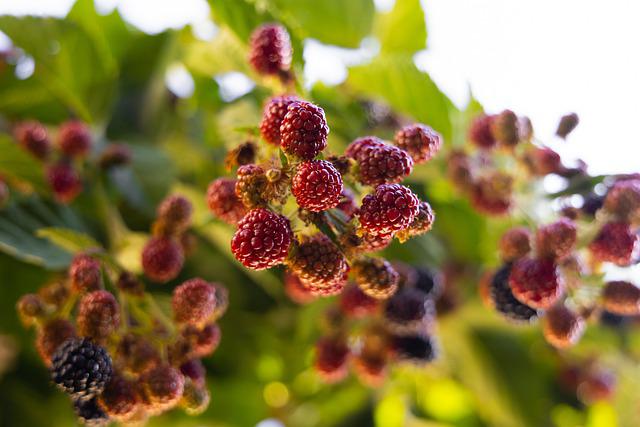Are Mulberry Trees Invasive? Here’s What You Should Know About Them

Mulberries can be invasive as they have shallow, invasive roots that can damage your home’s foundation and even bring the soil up to the surface. Fence rows can become overrun by white mulberry. As an Asian transplant that thrives in disturbed areas like fencerows, the white mulberry (Morus alba) is considered an invasive pest in Illinois. As a result, they are highly productive because they can thrive in a wide range of environments. In the lower 48 states, white mulberry can be found in abundance except in Nevada. Among the many disturbed areas it infests are old fields, urban lots, roadside medians, forest margins, etc. Tree pollen allergy sufferers may find the pollen of the white mulberry irritating. Male white mulberry flowers produce a lot of pollen, which is ejected at a high rate and travels a long distance ( Taylor et al. 2006). Since they are so fast-growing, they can reach 30 feet in just 10 to 20 years.
Table of Contents
Factors That Make Mulberry Invasive
Grow Quickly
As a fast-growing, sweet-tart fruit tree that thrives in a variety of soils, the mulberry tree (Morus spp.) is popular among homeowners. The problem is that they’re messy, rob water from better plants, and damage turf, sidewalks, and driveways, making them undesirable.
Produce Large Amounts of Pollens
Male mulberry trees produce a lot of pollen, which can be dangerous for people with allergies. For this reason, the planting of them has been prohibited in some North American cities.
Loves Water
Since mulberry trees adore water, they will find ways to get their roots into pipes, sewers, and irrigation systems of all sizes. Even though mulberry trees can cause foundation issues, it’s usually not because of their roots piercing through concrete or other foundation material.
Invasive Roots
The tree’s roots frequently influence the strength of the soil beneath a building’s foundation. The foundation can buckle and warp due to the subsidence caused by invasive roots.
How to Remove Mulberry Tree
Killing Shallow Roots
One method of eradicating them is to kill the shallow roots. It is, however, necessary to remove the tree’s root system, or it will grow back. It would be best if you began by removing the entire tree.
A mulberry tree can be entirely removed by digging it up. You can opt for a chemical treatment to save yourself some time and effort. Cut the tree at ground level from May to September, when the trees are in leaf. Small saplings should be dug up if they emerge.
After the tree has been cut down, spray the stump with a non-selective herbicide like glyphosate. Spray or paint the stumps with the herbicide to completely cover the cut surface. Mulberry trees have multiple root systems, so this should be done over two years.
Use Floral Tubes
Mulberry trees and their root systems can be killed using floral tubes if you cannot remove the tree from the area, like right next to a fence or building. To begin, use a glyphosate-safe product to fill the floral tubes. Two of these products are Bayer Advanced Brush Killer Plus and Roundup Brush Killer, both effective. This is a good time to put on some gloves.
Cut a small branch that doesn’t have a leaf or fork more than an inch away from the cut. The chemical will not be forced out of the tube if the tube is installed carefully over the branch’s end. This procedure should bring you as close as possible to the main trunk. Two or three tubes can be used on several branches if you cannot get close enough.
In a matter of days, dried leaves and a deteriorated tree should be visible as a sign of progress. This method has no risk of over-spray or the accidental death of nearby plant life. The use of multiple tubes can kill mulberry trees up to five inches in diameter. After a tree dies, remove it from the landscape.
Organic Method
There’s no need to worry if you don’t want to use a chemical treatment. There are organic ways to get rid of a mulberry tree problem. Herbicides can be replaced with natural weed killers like white vinegar sprayed from a spray bottle. You can also use rock salt to get rid of the stump.
When using systemic herbicide, the mulberry tree must be cut down to the ground before it can be treated. Afterward, apply a thick layer of undiluted white vinegar to the root. It will take several applications on a hot and dry day to kill and destroy the roots. To ensure that the roots get enough nutrition, spray any new leafy shoots that appear.
As the tree’s roots normally would, rock salt absorbs water when applied. There are weed-killing effects because of the drought. Toxic levels of salt accumulate in the roots of the mulberry tree. To cover the stump with rock salt, drill 12″ deep holes 1″ in diameter and fill them with salt.
Reference:
White mulberry: Woody invasive species of the Great Lakes. WIGL. (2022, January 27). Retrieved May 7, 2022, from https://woodyinvasives.org/woody-invasive-species/white-mulberry/#1562693791641-6f007f86-0a8cfa11-61a18513-c905017e-bd54
Invasive.org. 2022. White Mulberry (Morus alba). [online] Available at: <https://www.invasive.org/alien/pubs/midatlantic/moal.htm> [Accessed 7 May 2022].
